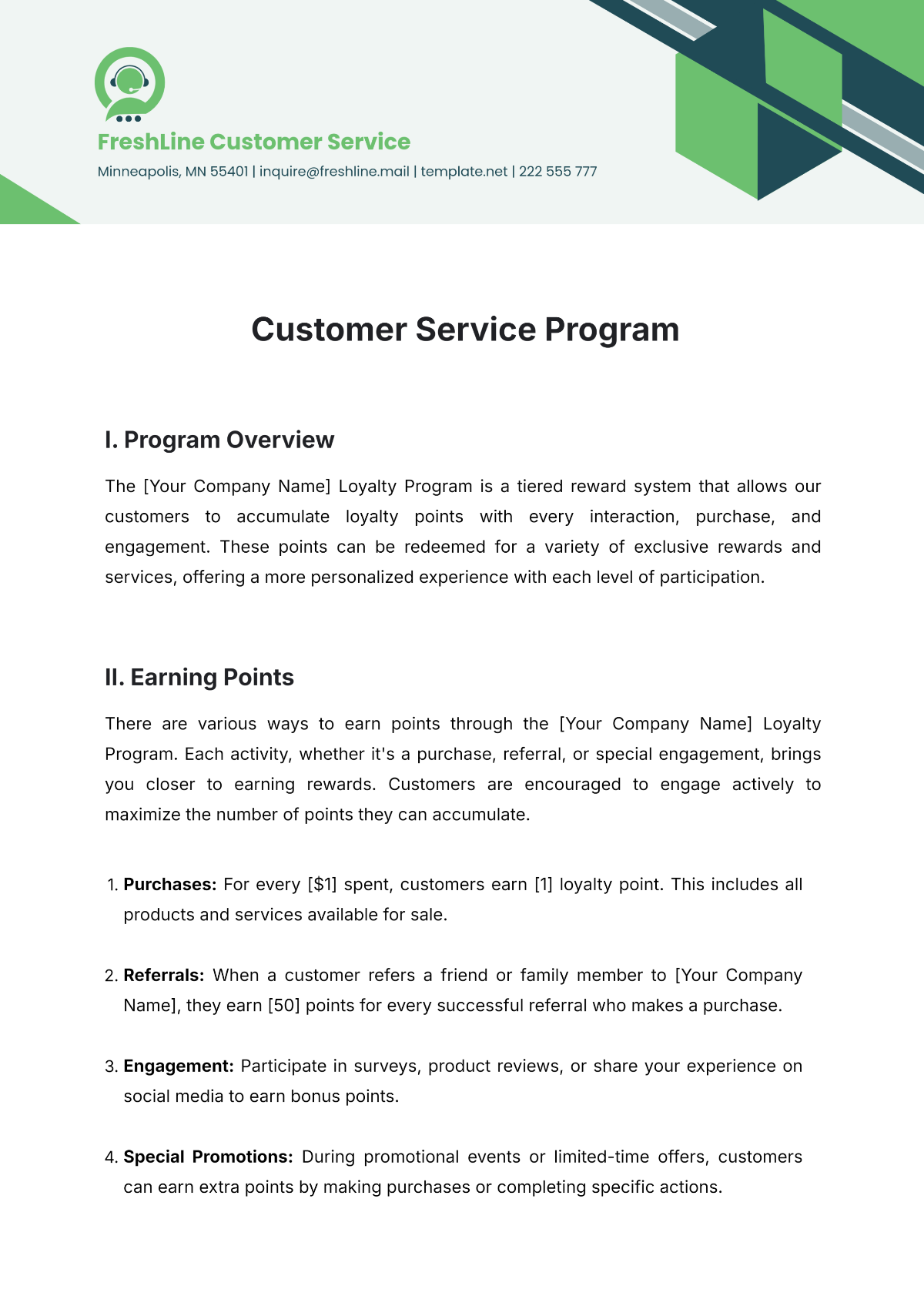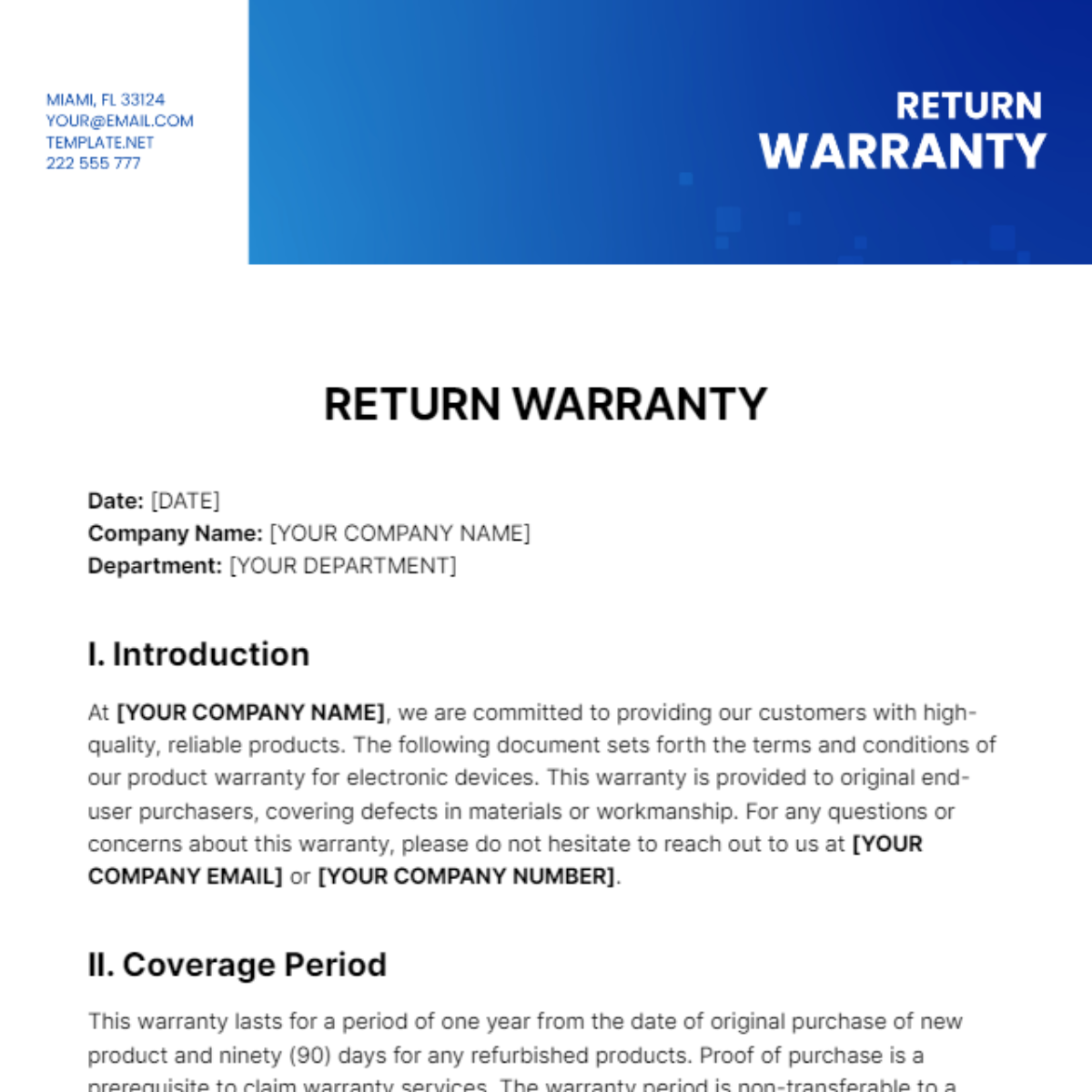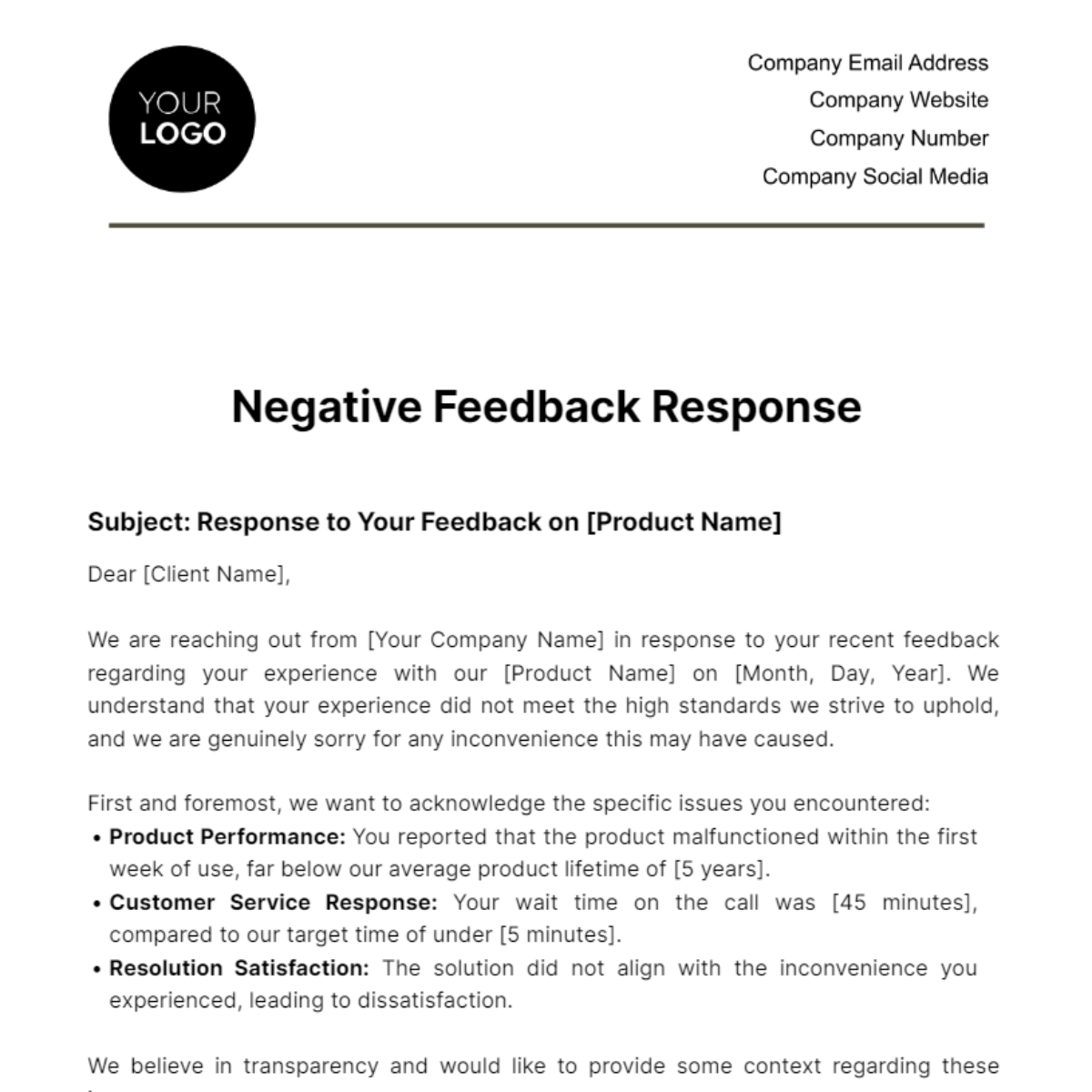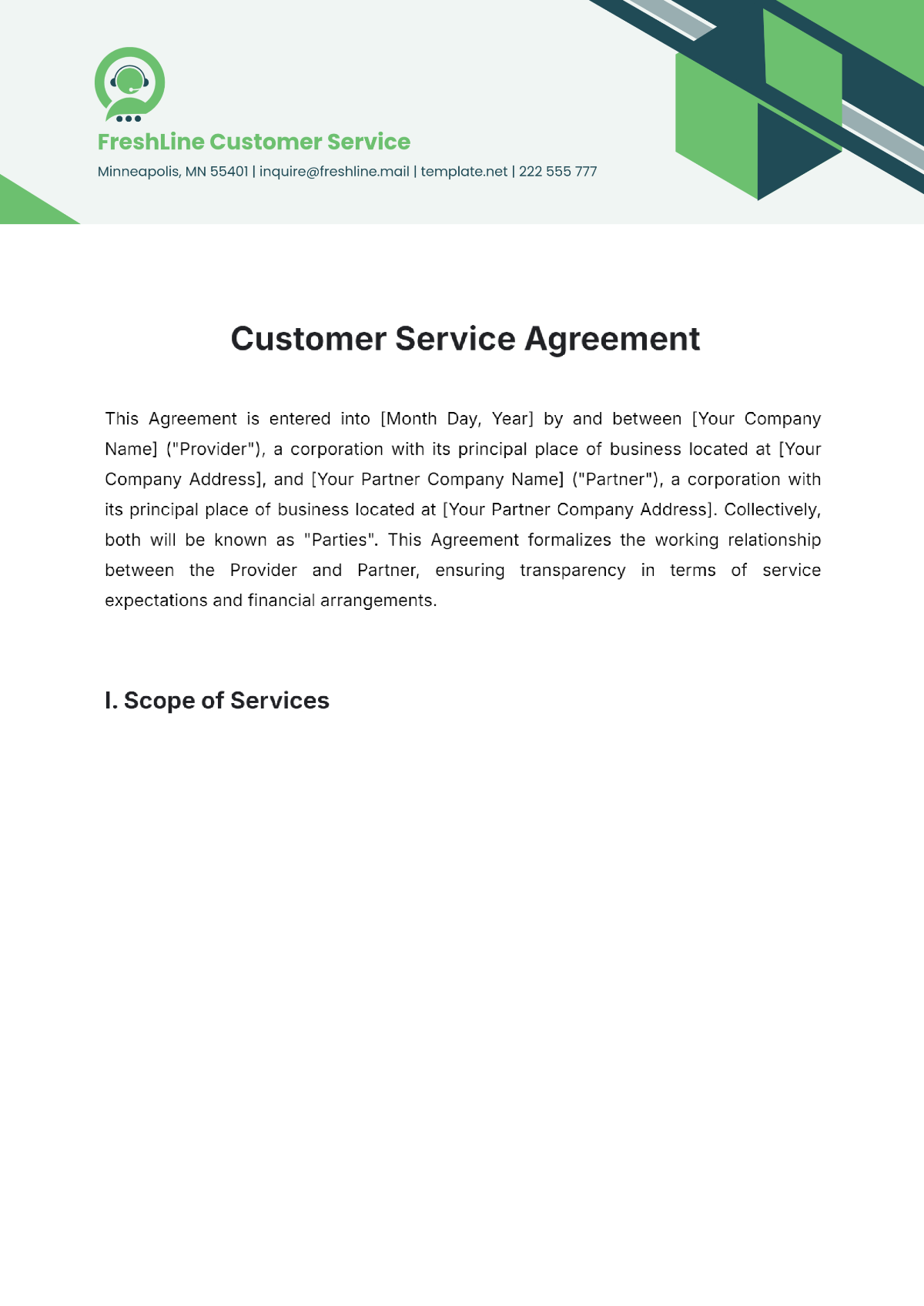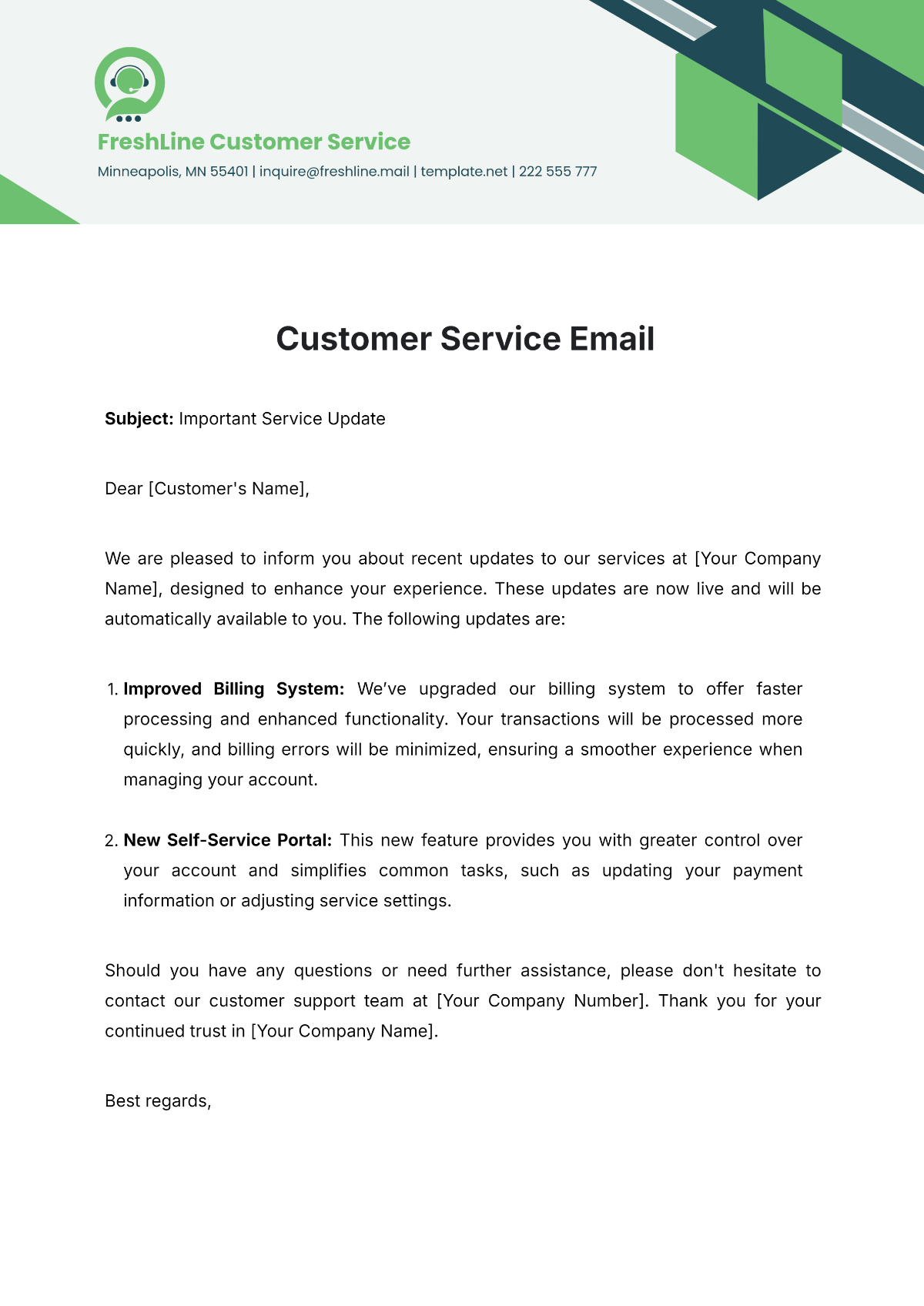Customer Service Guide
I. Introduction to Customer Service
A. Purpose of the Customer Service Guide
The purpose of this Customer Service Guide is to provide all employees of [Your Company Name] with a comprehensive reference to deliver outstanding customer service consistently. This document serves as an essential tool in ensuring that all customer-facing staff understand the company's values, objectives, and customer service standards. With customer satisfaction at the heart of [Your Company Name]'s mission, this guide equips staff with the knowledge and strategies necessary to address various customer needs and concerns effectively, whether they are handling inquiries, troubleshooting issues, or providing solutions.
By adhering to the practices outlined here, customer service representatives are better prepared to build positive relationships with clients, promote customer loyalty, and ensure the company's continued success. Furthermore, this guide will foster uniformity across all touchpoints, ensuring that customers receive the same level of service regardless of the channel they use to interact with us.
B. Importance of Customer Service
Exceptional customer service is crucial in today’s competitive market. At [Your Company Name], we recognize that every customer interaction is an opportunity to strengthen the customer’s connection to our brand. Customer service plays an integral role in fostering long-term relationships, which directly impacts company growth, reputation, and profitability.
When customers receive excellent service, they are more likely to remain loyal to the brand, refer others, and share positive feedback. Research shows that high-quality customer service contributes to:
Increased Customer Retention: A satisfied customer is more likely to stay loyal to a company, increasing retention rates by up to [70%]. This, in turn, reduces the cost of acquiring new customers.
Improved Lifetime Value: Customers who have positive service experiences are more likely to make repeat purchases and recommend products, thus increasing the overall lifetime value of each client, which could exceed [$500,000] over the course of their relationship with the company.
Brand Advocacy: When customers feel valued and heard, they become brand advocates, driving positive word-of-mouth and strengthening the company’s reputation in the marketplace.
Moreover, delivering top-tier customer service will allow [Your Company Name] to stand out in the industry and build a strong reputation that attracts new customers, partners, and investors. This dedication to service will ensure that the company remains competitive through [2050] and beyond.
II. Customer Service Standards
A. Core Principles of Customer Service
To ensure a high level of service quality, all customer service representatives at [Your Company Name] must adhere to our core principles. These principles serve as the foundation for all customer interactions, guiding employees to deliver consistent and high-value service:
Responsiveness: Timely responses are a critical component of great customer service. In a fast-paced world, customers expect quick answers. Representatives should aim to respond to all inquiries within [24 hours], ensuring that customers feel heard and valued.
Empathy: Understanding and acknowledging the customer’s emotions are key to building rapport and trust. When a customer is upset or frustrated, it is essential to approach the situation with empathy. A simple acknowledgment like, "I understand how frustrating that must be," can significantly enhance the customer experience and de-escalate potential conflicts.
Consistency: Every customer should experience the same high level of service, whether they interact with the company online, over the phone, or in person. Consistent service reinforces trust and reliability, which in turn increases customer loyalty and satisfaction.
Problem-Solving: Customers seek solutions, not excuses. Customer service teams must be skilled problem-solvers, taking initiative to resolve issues as quickly and efficiently as possible. On average, the resolution time for most inquiries should not exceed [48 hours], and the team must continuously work towards reducing resolution times while ensuring accuracy and quality.
B. Metrics for Customer Service Success
At [Your Company Name], we measure customer service success through various key performance indicators (KPIs). These metrics provide valuable insight into the effectiveness of our customer service operations and highlight areas for continuous improvement. Some of the most important KPIs include:
Customer Satisfaction Score (CSAT): This metric gauges the overall satisfaction of customers after an interaction with the service team. The target for CSAT should always be at least [95%] to ensure that customers are happy with the service they receive.
Net Promoter Score (NPS): NPS measures customer loyalty and their likelihood of recommending the company to others. A score above [80] is indicative of a highly satisfied customer base. Regular monitoring of NPS helps identify trends and areas for improvement.
Average Response Time: The time it takes for customer service agents to respond to customer queries is a key measure of efficiency. The average response time should not exceed [1 hour] for any medium of communication, including email, phone, or live chat.
First Contact Resolution Rate (FCR): This metric measures the percentage of customer issues resolved on the first interaction. Aiming for an FCR of [85%] or higher ensures that customers’ concerns are addressed quickly, without the need for follow-up.
Metric | Target Value |
|---|---|
Customer Satisfaction (CSAT) | 95% |
Net Promoter Score (NPS) | 80 |
Response Time | <1 hour |
Resolution Rate (FCR) | 85% |
Regular tracking and assessment of these metrics help [Your Company Name] maintain high service standards and continuously improve the customer service experience.
III. Communication Guidelines
A. Tone and Language
Effective communication is the backbone of great customer service. At [Your Company Name], it’s important to always use a tone and language that reflects professionalism, warmth, and respect. The way representatives communicate can deeply impact customer satisfaction, and adhering to certain language guidelines helps foster positive relationships:
Professionalism: Always use courteous and respectful language when engaging with customers. Avoid slang, overly casual language, or anything that might appear unprofessional. For example, instead of saying, “I can’t help you with that,” use, “Let me see what I can do to assist you.”
Clarity: Clear and concise communication is essential to avoid confusion. Avoid jargon or overly technical language unless the customer is familiar with the terms. Instead, use simple and easy-to-understand language. For example, when explaining a billing issue, say, "The payment was processed on [date] and may take [5] days to reflect in your account," instead of diving into complex banking terminology.
Positivity: Even when dealing with difficult situations, it’s crucial to remain positive. Instead of focusing on what cannot be done, focus on what can be done. For instance, instead of saying, "We don’t offer that service," say, "That’s a great suggestion. While we don’t offer that service right now, let me show you some alternatives that might work for you."
B. Channels of Communication
At [Your Company Name], we serve customers across multiple communication channels. Whether a customer is reaching out via email, phone, live chat, or social media, we are committed to providing a seamless and consistent experience across all platforms:
Phone Support: We offer [24/7] phone support with the goal of responding to all customer calls in under [2 minutes]. Calls should be handled professionally, with a focus on clear communication and empathy. For complex issues, it’s important to follow up with an email detailing the conversation and any next steps.
Email Support: We strive to respond to all email inquiries within [24 hours]. Acknowledge receipt of the email promptly and provide a timeline for resolution. For more complex queries, provide an estimated resolution time and check in with the customer regularly until the issue is resolved.
Live Chat: Live chat is available during working hours, from [8 AM to 10 PM]. The average response time for live chat inquiries should be under [10 minutes]. Chat agents must maintain a helpful and informative tone, aiming to resolve queries quickly and efficiently.
Social Media: Our customer support team monitors social media platforms such as Facebook, Instagram, and Twitter. We aim to respond to direct messages and comments within [2 hours]. This quick response time helps prevent customer frustration and demonstrates our commitment to customer satisfaction.
Channel | Availability | Average Response Time |
|---|---|---|
Phone Support | 24/7 | 2 minutes |
Email Support | 24 hours | 24 hours |
Live Chat | 8 AM - 10 PM | 10 minutes |
Social Media | 8 AM - 10 PM | 2 hours |
IV. Handling Customer Complaints
A. Steps for Resolving Complaints
Handling complaints effectively is an essential skill for customer service representatives. When a customer has a complaint, it's an opportunity to build trust and resolve issues to their satisfaction. The following steps outline the best approach for addressing complaints:
Acknowledge: Always start by acknowledging the customer’s frustration or dissatisfaction. A simple "I understand your concern and appreciate you bringing it to our attention" can go a long way in calming an upset customer.
Apologize: Offering a sincere apology, regardless of whether the issue was the company’s fault, is key to diffusing tension. An apology shows the customer that you value their experience and are committed to making things right.
Investigate: Gather all relevant information about the issue, such as the nature of the complaint, product details, and dates of interactions. If necessary, consult internal systems or escalate the issue to another department.
Resolve: Offer a solution that aligns with company policies and meets the customer’s needs. If the solution is not immediately available, provide a timeline for resolution. Always aim to resolve the issue within [48 hours].
Follow-Up: After the issue has been resolved, follow up with the customer within [3 days] to ensure that they are satisfied with the outcome. This shows the customer that their issue is taken seriously and that the company values their business.
B. Escalation Process
In cases where customer complaints cannot be resolved at the first level, [Your Company Name] has an escalation process in place. This ensures that complex or sensitive issues receive the attention they need:
Level 1: If the issue cannot be resolved by the frontline representative, it should be escalated to the Team Lead. The Team Lead will respond to the customer within [12 hours].
Level 2: If further escalation is needed, the complaint will be passed to the Customer Service Manager, who will work with the customer to resolve the issue. The response time at this level should be no longer than [24 hours].
Level 3: For particularly complex or high-priority issues, the Senior Management team will intervene. Final resolutions for these cases should be provided within [48 hours].
V. Training and Development for Customer Service Teams
A. Training Programs
At [Your Company Name], ongoing education and training are critical to maintaining high service standards. Our training programs are designed to equip customer service staff with the skills and knowledge necessary to meet the diverse needs of our clients:
Onboarding Training: New employees undergo a [2-week] onboarding program that covers everything from company policies and values to in-depth product knowledge and communication best practices. This ensures that all new hires understand the standards expected of them and are equipped to handle customer inquiries efficiently.
Ongoing Training: Customer service teams participate in monthly workshops and training sessions. These sessions cover new tools, changes in company policies, and common customer issues. Ongoing training helps employees stay updated on industry trends and improve their skills.
Crisis Management Training: Once a year, customer service teams undergo crisis management training. This helps them handle emergencies, including data breaches, negative press, or service outages, with confidence and professionalism.
B. Certification and Competency
All customer service employees are required to pass a competency test every [6 months] to ensure they are maintaining the highest standards. Those who consistently meet performance benchmarks may be considered for leadership or specialist roles.
VI. Technology and Tools for Customer Service
A. Software Used
In today’s digital age, customer service operations are greatly enhanced by technology. [Your Company Name] uses a suite of software tools to streamline operations, improve efficiency, and deliver excellent service:
Customer Relationship Management (CRM): We use [Your CRM Tool] to manage customer data, track interactions, and personalize communication. This tool enables agents to access customer histories and preferences to provide more tailored support.
Helpdesk Software: [Your Helpdesk Tool] helps manage support tickets, track response times, and assess overall customer satisfaction. This tool also provides detailed analytics to help improve team performance.
Chatbots: We employ AI-powered chatbots to handle common inquiries and direct more complex issues to human agents. Chatbots are available [24/7] to provide quick answers to frequently asked questions.
Tool | Purpose | Example Feature |
|---|---|---|
CRM | Manage customer data | Tracking customer preferences |
Helpdesk Software | Ticket management and metrics | Automated ticket assignment |
Chatbots | Automated query handling | 24/7 availability |
B. Security Protocols
At [Your Company Name], we are committed to ensuring the security and confidentiality of all customer data. We adhere to strict security protocols to protect customer information, including:
Encryption: All sensitive data, including customer personal details and payment information, is encrypted both in transit and at rest to ensure it is secure from unauthorized access.
Multi-Factor Authentication (MFA): All customer service agents must use multi-factor authentication to access internal systems, reducing the risk of unauthorized access.
Regular Audits: We conduct regular security audits and penetration testing every [6 months] to identify vulnerabilities and strengthen our systems.
VII. Measuring and Improving Customer Service
A. Surveys and Feedback
We place great emphasis on gathering feedback to improve our services. [Your Company Name] utilizes several methods to collect customer feedback:
Post-Interaction Surveys: Immediately after a customer service interaction, customers are invited to complete a brief survey to evaluate their experience. These surveys include questions about the clarity, professionalism, and helpfulness of the support received.
Annual Feedback Surveys: Every year, we send out a comprehensive survey to customers, asking for feedback on our services, products, and overall brand experience. This feedback is used to identify areas of improvement and set goals for the upcoming year.
B. Analyzing Customer Trends
Our customer service team continuously monitors customer behavior and feedback trends to stay proactive in addressing customer needs. Monthly analytics reports allow us to spot emerging patterns, such as:
Peak Inquiry Times: By identifying busy times, we can adjust staffing schedules to ensure that we are adequately prepared to handle a higher volume of inquiries during these times.
Frequently Asked Questions: If certain questions or issues arise frequently, we can develop more comprehensive FAQs or self-help materials, empowering customers to find solutions independently.
VIII. Future Strategies for Customer Service (2050 and Beyond)
A. AI and Automation
Looking to the future, [Your Company Name] plans to continue evolving its customer service offerings by integrating more advanced technologies:
AI-Powered Insights: We are exploring the use of artificial intelligence to predict customer needs before they arise. Using predictive analytics, we aim to offer personalized solutions proactively, based on customer data.
Voice Recognition: With advancements in voice recognition technology, we are developing systems that allow customers to interact with support using only their voice, providing faster, more intuitive service.
B. Sustainability in Customer Service
[Your Company Name] is also committed to sustainability. By [2055], we aim to:
Digital First: Reduce paper-based interactions by [90%], promoting digital receipts, invoices, and documentation to reduce our carbon footprint.
Carbon-Neutral Operations: We are implementing energy-efficient practices in our call centers to become carbon neutral by [2055], ensuring that our customer service operations are environmentally sustainable.
C. Personalization
The future of customer service at [Your Company Name] will be highly personalized:
Tailored Recommendations: By leveraging advanced data analytics, we plan to offer personalized product recommendations and service options based on individual customer preferences.
Loyalty Programs: We are enhancing our loyalty programs to reward customers based on their purchasing behavior and interactions with our support team, ensuring they feel valued at every stage of the customer journey.
IX. Summary
This Customer Service Guide provides the foundation for delivering exceptional service at [Your Company Name]. By adhering to the principles, standards, and processes outlined in this document, we aim to foster positive, lasting relationships with our customers and continuously improve our services. Through ongoing training, technological advancements, and customer feedback, we will adapt to evolving customer needs and ensure that our customer service operations remain a key driver of company success through [2050] and beyond.




